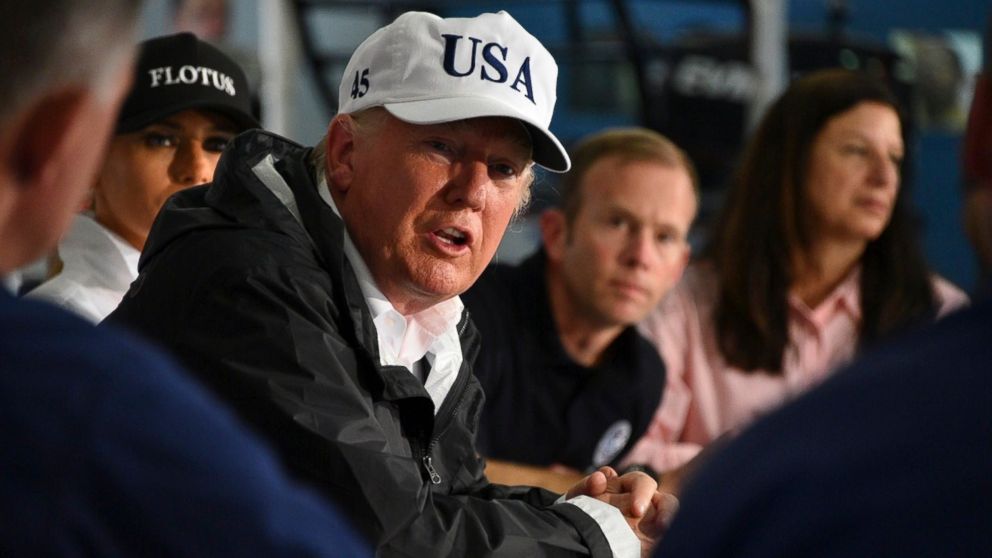ANALYSIS: Amid Harvey, Trump eschews typical presidential optics for Trumpism
— -- Squint and it almost seemed like a traditional president doing what’s typically done after disaster strikes. President Trump was meeting with those grappling with a storm’s impact, praising the efforts and coordination of local officials, and promising quick rebuilding for the people of the afflicted region.
But open your eyes wide and the Trump-style twists make themselves as known as the big white hat with the “USA” logo – versions of which were for sale, as always, on the Trump campaign website.
There were the superlatives, the grand pronouncements, the giant Texas flag, and the raving about the size of both the storm and the crowd that materialized to greet him. There was also the decision not to visit areas devastated by Hurricane Harvey.
On cue this morning, a presidential tweet followed: “After witnessing first hand the horror & devastation caused by Hurricane Harvey, my heart goes out even more so to the great people of Texas!”
It’s hard to argue that Trump witnessed devastation “first hand.” And, as commentators quickly noted, he spent little time in Texas talking about the human toll of a deadly storm that’s sure to have claimed more lives by the time the water recedes.
None of that matters to Trump, and most likely to his supporters. The storm yet again revealed the multiple sides of a complicated president, one who’s willing to buck established norms for often mystifying reasons, while still displaying a mastery of the images that surround a presidency.
On one level, Trump appeared to internalize lessons learned the hard way by previous presidents. He was quicker than his predecessors to get to a storm-ravaged region. Regular briefings by federal officials have conveyed an image of a responsive government apparatus – haunted, no doubt, by potential Katrina comparisons.
Yet on another level, Trump fell into potential traps he created for himself. He promised that Texas will be in “fantastic shape” again and that it will happen “very, very quickly,” and struck an odd note when he raved about crowd size after he landed near the storm zone.
He even contradicted himself on the issue of self-congratulations. “We don't want to congratulate,” Trump said yesterday in Corpus Christi; “I want to say congratulations,” he said to local officials a few hours later in Austin.
And while politics has been sidelined by images both heartbreaking and inspiring, Trump hasn’t behaved all that differently. Pressed on his timing earlier this week, he half-joked that he wanted to pardon former Sheriff Joe Arpaio Friday night, at a time that more Americans were presumably watching television because of the storm.
His tweets attacking media outlets have also continued to flow. He kept intact a scheduled appearance to push tax reform today in Missouri.
All of that opens Trump up to significant political risk, if things don’t go as he said they would, or if he looks like he’s playing politics during a time of national tragedy. Even before Harvey struck, polls had already shown a certain weariness surrounding Trump’s style among his supporters.
In more typical presidencies, the storm would be cast as an opportunity for resetting a presidency around unifying tones and shared missions. That attitude may prevail in Congress, where talk of budget brinksmanship has waned in Harvey’s wake.
Trump, however, is showing again that he has little interest in pursuing what’s typical in a presidency. He’s trusting his own brand of words and images to carry through what figures to be a prolonged period of rebuilding and anxiety.




